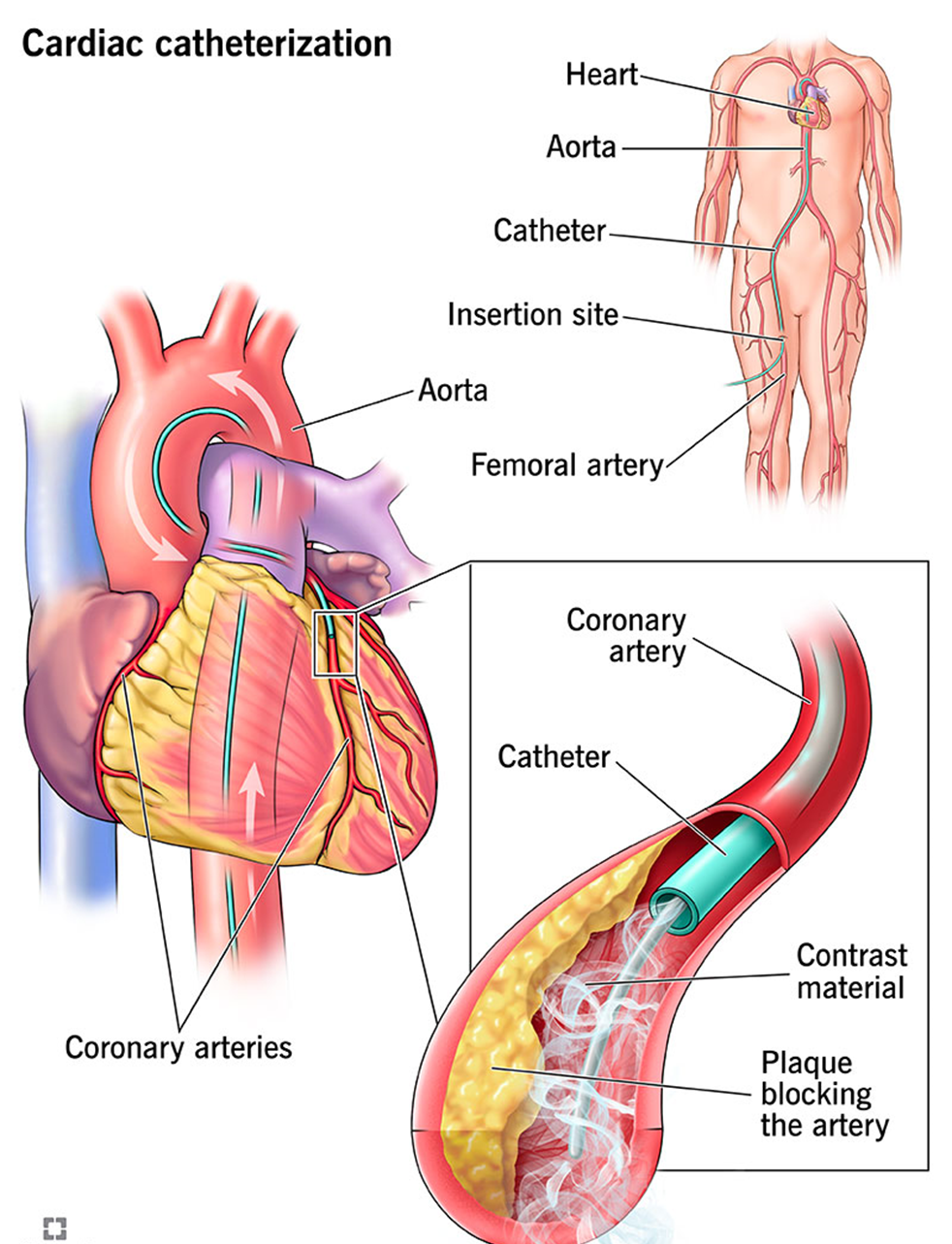A nurse is collecting a medication history from a client who is scheduled to have a cardiac catheterization. Which of the following medications taken by the client interacts with contrast material and places the client at risk for acute kidney injury?
Metformin
Carvedilol
Nitroglycerin
Atorvastatin
None
None
The Correct Answer is A
Choice A: Metformin
Reason: Metformin is known to interact with contrast material, particularly iodinated contrast media, and can increase the risk of acute kidney injury (AKI). This interaction can lead to a condition known as contrast-induced nephropathy (CIN) or contrast-induced acute kidney injury (CI-AKI). Metformin is primarily excreted by the kidneys, and impaired renal function can lead to its accumulation, increasing the risk of lactic acidosis, a rare but serious complication. Therefore, it is generally recommended to withhold metformin before and after the administration of contrast media until renal function is confirmed to be normal.

Choice B: Carvedilol
Reason: Carvedilol is a beta-blocker used to treat high blood pressure and heart failure. It does not have a known interaction with contrast media that would increase the risk of acute kidney injury. Carvedilol primarily affects the cardiovascular system and does not significantly impact renal function or interact with contrast agents.
Choice C: Nitroglycerin
Reason: Nitroglycerin is used to treat angina and other heart conditions by dilating blood vessels. It does not interact with contrast media in a way that would increase the risk of acute kidney injury. Nitroglycerin’s primary effects are on the cardiovascular system, and it does not have nephrotoxic properties.
Choice D: Atorvastatin
Reason: Atorvastatin is a statin used to lower cholesterol levels. While it can have effects on liver enzymes and muscle tissue, it does not interact with contrast media to increase the risk of acute kidney injury. Atorvastatin is metabolized by the liver and does not significantly impact renal function.
Nursing Test Bank
Naxlex Comprehensive Predictor Exams
Related Questions
Correct Answer is A
Explanation
Choice A Reason:
Constant bubbling in the water seal chamber of a chest drainage system typically indicates an air leak. This can occur if there is a break in the system, allowing air to enter. The air leak could be from the chest tube insertion site, the tubing, or the drainage system itself. Identifying and correcting the source of the air leak is crucial to ensure the system functions properly and the patient’s condition does not worsen.
Choice B Reason:
A tension pneumothorax is a life-threatening condition where air accumulates in the pleural space and cannot escape, leading to increased pressure on the lungs and other thoracic structures. While a tension pneumothorax can cause significant respiratory distress, it is not typically indicated by constant bubbling in the water seal chamber. Instead, signs of tension pneumothorax include tracheal deviation, hypotension, and severe respiratory distress.
Choice C Reason:
A kink in the tubing of a chest drainage system can obstruct the flow of air and fluid, but it does not cause constant bubbling in the water seal chamber. Instead, a kink would likely result in a lack of drainage or intermittent bubbling as the obstruction temporarily blocks and then allows passage of air or fluid.
Choice D Reason:
Increased drainage in a chest tube system indicates that more fluid or air is being removed from the pleural space, but it does not cause constant bubbling in the water seal chamber. Increased drainage might be seen in cases of hemothorax or pleural effusion, where large amounts of fluid are present.
Choice E Reason:
Tidaling refers to the normal rise and fall of water in the water seal chamber with the patient’s respiratory cycle. It indicates that the chest tube is patent and functioning correctly. Absence of tidaling could suggest that the lung has fully re-expanded or that there is an obstruction in the system. However, tidaling itself does not cause constant bubbling.
Correct Answer is A
Explanation
Provide a quiet, low-stimulus environment
Choice A Reason:
Provide a quiet, low-stimulus environment
This is the correct answer. A quiet, low-stimulus environment helps to reduce the metabolic demands on the body and prevent overstimulation, which can trigger a thyroid crisis. Hyperthyroidism increases the body’s metabolic rate, and excessive stimulation can exacerbate symptoms and lead to a crisis. Therefore, creating a calm environment is crucial in managing hyperthyroidism and preventing complications.
Choice B Reason:
Keep the client NPO
Keeping the client NPO (nothing by mouth) is not typically necessary for preventing a thyroid crisis. While it may be required for certain procedures or if the client is experiencing severe symptoms, it is not a standard intervention for hyperthyroidism management. Therefore, this choice is not correct.
Choice C Reason:
Administer aspirin as prescribed for any sign of hyperthermia
Administering aspirin for hyperthermia is not recommended in clients with hyperthyroidism. Aspirin can increase free thyroid hormone levels by displacing thyroid hormones from their binding proteins, potentially worsening hyperthyroidism. Instead, other antipyretics like acetaminophen are preferred. Therefore, this choice is not correct.
Choice D Reason:
Observe the client carefully for signs of hypocalcemia
Observing for signs of hypocalcemia is not directly related to preventing a thyroid crisis. Hypocalcemia is more commonly associated with thyroidectomy or parathyroidectomy rather than hyperthyroidism itself. Therefore, this choice is not correct.
Whether you are a student looking to ace your exams or a practicing nurse seeking to enhance your expertise , our nursing education contents will empower you with the confidence and competence to make a difference in the lives of patients and become a respected leader in the healthcare field.
Visit Naxlex, invest in your future and unlock endless possibilities with our unparalleled nursing education contents today
Report Wrong Answer on the Current Question
Do you disagree with the answer? If yes, what is your expected answer? Explain.
Kindly be descriptive with the issue you are facing.
